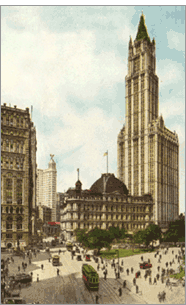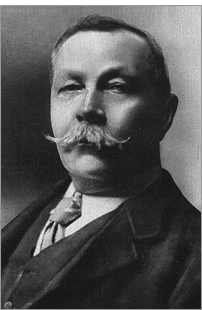
|
| |
1910–1924 | 1925–1926 | 1927–1930 | 1931–1943 | MORE RECENT
MEDIUM TRAPPED BY ELECTRIC LIGHTS First Claimant of Scientific American’s $5,000 Prize Detected in Test. RESULT TOLD PREMATURELY By Houdini, One of the Expert Watchers, Who Says He Made No Promise of Secrecy.
J. Malcolm Bird, associate editor of The Scientific American, said last night that while the statements made by Houdini about the incidents of the last séance were substantially correct, Houdini’s revelations were made without authority and in violation of an understanding, shared by all members of the committee which managed the tests, that none of the results should be made public until authorization was given by The Scientific American. “And please say,” added Mr. Bird, “that Mr. Houdini is through right now as a member of that committee and make it plain that he is through because he has violated that understanding.”
Valentine is the first of the recognized mediums of the United States to try to win the $5,000 prize offered by The Scientific American to any one who can produce genuine manifestations of psychic phenomena. He met a selected group of expert observers in a room of The Scientific American hung with black draperies to shut out the light, but equipped with various ingenious devices to detect fraud. Here is Houdini’s story of the result: Houdini’s Story of the Test. “The man came there to win the $5,000 prize, and we had agreed to act like a lot of boobs to see what his game was. I went there at the invitation of The Scientific American, and I feel at liberty to tell just what happened. There was no string tied to my invitation and was not pledged to secrecy, although there has been an awful lot of reticence on the part of those who were [present?]. “The chairs of the [guests?] were arranged in a circle, with the chairs of the medium and his assistants in the middle of the circle. The chairs in which the medium and his assistant sat were rigged with electrical contacts, so that when the medium got out of his chair contacts were established and excited an electric light in an adjoining room. “In the adjoining room sat other observers, including a young woman stenographer who, as I understand it, listened through a dictaphone which indicated whether the ‘spirit voice’ of the medium or his helper originated at the center of the circle where either one or the other sat or came from some part of the room.
“Gee, I got an awful clout on the head,” continued Houdini. “And ever since they learned that I was one of the judges, my friends who have read stories about the ‘séance’ have been asking me whether I was such a simpleton and a fool as to believe all that bunk. “I never saw such awkward work in all my life. Yet that medium had made a statement, which he asked us to believe, that he had often been lifted off the floor by spirits and that the spirits had placed him on a [?]. He got off that bunk before he started his [?]. “And we said, “Is that so?” and “How remarkable,” and “Can you just imagine a thing like that?” That man thought he had us fooled. “There wasn’t a chance at any time that this magician [?] [?] I think those people ought to be put in jail for preying on the most sacred of human emotions.” Says His Mind is Open Houdini was asked if he believed in spiritualism. “I am willing to believe,” he replied, “but of all I have seen I have never found anything that couldn’t be explained by human effort. My mind is open. I am a human being, and I have loved ones on the other side. I would like to get in touch with them if it were possible.” He was asked if he had any faith in Sir Arthur Conan Doyle’s psychic pictures and other evidence supporting spiritualism. Houdini explained that Sir Arthur was one of the guests invited to a magic dinner given by the Society of American Magicians a year ago at which Sir Arthur mystified many of the magicians and their guests with an exhibition of motion pictures of dinosaurs and other prehistoric animals filmed at a trick laboratory over in New Jersey. Since that night, Conan Doyle has been quoted as saying some severe things about the magicians, whom he called “tricksters.” Houdini said that “some of the members of the Society of American magicians [sic] were going after Conan Doyle.” Speaking for himself, he said: “I haven’t started anything yet. I’m trying to find out whether Sir Arthur was quoted correctly in a Western paper [monthly?] before I have anything to say.” This article is reproduced here only for educational purposes. Please do not copy the text or accompanying images for commercial use.
|
 Harry Houdini, President of the Society of American Magicians, called up
Harry Houdini, President of the Society of American Magicians, called up  Houdini’s reason for making his statement was, as he explained, that he had been taunted by his friends with “being such a simpleton” as to take any stock in the séance proceedings, and he could not permit his friends to believe that he was convinced of its genuineness. He asserted that he attended the demonstration under no restriction.
Houdini’s reason for making his statement was, as he explained, that he had been taunted by his friends with “being such a simpleton” as to take any stock in the séance proceedings, and he could not permit his friends to believe that he was convinced of its genuineness. He asserted that he attended the demonstration under no restriction.
 “While the séance was in progress the test lights in the adjoining room repeatedly came up, proving that the medium had left his chair—for instance, probably at the moment when Dr. [Kunn?] of The Scientific American was [whacked?] on the [back?] with the end of the trumpet and [lost?] his [?]. The girl in the adjoining room kept a stopwatch and recorded the time of each word spoken by the medium in the [guise?] of a spirit. It was simple enough to check the times the medium left his chair by the lights in the adjoining room and the stopwatch and the dictaphone furnished whatever else was needed in the way of evidence showing that the medium had to leave his chair before the spirits could tap the [guests?] on the knee or wave a trumpet over their heads.
“While the séance was in progress the test lights in the adjoining room repeatedly came up, proving that the medium had left his chair—for instance, probably at the moment when Dr. [Kunn?] of The Scientific American was [whacked?] on the [back?] with the end of the trumpet and [lost?] his [?]. The girl in the adjoining room kept a stopwatch and recorded the time of each word spoken by the medium in the [guise?] of a spirit. It was simple enough to check the times the medium left his chair by the lights in the adjoining room and the stopwatch and the dictaphone furnished whatever else was needed in the way of evidence showing that the medium had to leave his chair before the spirits could tap the [guests?] on the knee or wave a trumpet over their heads.